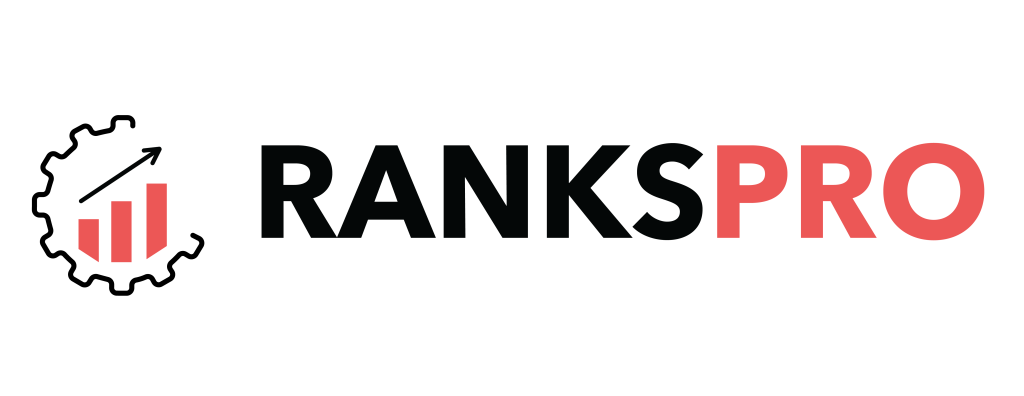In the ever-evolving landscape of digital marketing, Search Engine Optimization (SEO) remains a cornerstone of online success. And at the heart of any effective SEO strategy lies a crucial practice: rank tracking.
As we navigate 2025, understanding where your website stands in search engine results pages (SERPs) is more critical than ever.
This ultimate guide will walk you through everything you need to know about SEO rank tracking, ensuring you’re equipped to monitor, analyze, and elevate your organic performance.
For businesses leveraging tools and their robust rank tracking features, this guide will serve as a roadmap to maximizing your SEO insights and achieving those coveted top SERP spots.
What is SEO Rank Tracking and Why is it Crucial in 2025?
SEO rank tracking is the process of monitoring your website’s (and your competitors’) keyword rankings on search engines like Google, Bing, and others. It involves regularly checking the positions your web pages hold for specific keywords or phrases that your target audience uses to find information, products, or services related to your niche.
In 2025, the importance of rank tracking cannot be overstated:
Gauging SEO Performance
It’s the most direct way to measure the effectiveness of your SEO efforts. Are your on-page optimizations, content strategy, and link-building activities translating into better visibility?
Understanding Market Dynamics
Search rankings are not static. Algorithm updates, competitor actions, and shifts in user search behavior constantly influence them. Tracking helps you stay agile.
Identifying Opportunities and Threats
Consistent tracking reveals new keyword opportunities, highlights keywords where you’re losing ground, and helps you understand how competitors are performing.
Data-Driven Decision Making
Rank tracking provides tangible data to inform your SEO strategy, content creation, and overall marketing decisions.
Measuring ROI
For businesses investing in SEO, rank tracking is essential for demonstrating return on investment by correlating ranking improvements with organic traffic and conversions.
The Rise of AI in Search
With AI-driven search experiences like Google’s Search Generative Experience (SGE) becoming more prominent, understanding your visibility within these new formats is also becoming part of advanced rank tracking.
Simply put, without rank tracking, you’re flying blind in your SEO endeavors.
The Core Benefits of Consistent Rank Tracking
Consistently monitoring your keyword positions offers a multitude of benefits that can significantly impact your bottom line:
Early Detection of Issues
Sudden drops in rankings can signal technical SEO problems, manual penalties, or significant algorithm changes. Early detection allows for quicker remediation.
Competitive Analysis
Knowing where your competitors rank for your target keywords helps you identify their strengths and weaknesses, allowing you to refine your strategy to outperform them.
Local SEO Success
For businesses targeting local customers, tracking rankings for geo-specific keywords (e.g., “best coffee shop in [city]”) is vital for driving foot traffic and local online engagement.

Content Strategy Refinement
See which pieces of content are ranking well and for which keywords. This insight helps you create more content that resonates with both users and search engines.
Improved Keyword Targeting
Track a broad set of keywords, including long-tail variations, to understand what truly drives relevant traffic. You might discover high-intent keywords you hadn’t initially focused on.
SERP Feature Monitoring
Modern SERPs are more than just blue links. Tracking your presence in featured snippets, People Also Ask boxes, image packs, video carousels, and local packs is crucial for maximizing visibility.
Client Reporting and Transparency
For agencies, detailed rank tracking reports provide tangible proof of progress and value to clients.
Getting Started: Setting Up Your SEO Rank Tracking Strategy
Embarking on rank tracking requires a strategic approach. Here’s how to get started:
Define Your Goals
What do you want to achieve with SEO? Increased brand awareness, more leads, higher sales? Your goals will influence the keywords you track and the SEO metrics you prioritize.
Comprehensive Keyword Research
- Identify Your Core Keywords: These are the primary terms your audience uses.
- Discover Long-Tail Keywords: These longer, more specific phrases often have lower competition and higher conversion rates.
- Analyze Competitor Keywords: See what your competitors are ranking for. Tools like RanksPro can help with this.
- Consider User Intent: Are users looking to learn (informational), buy (transactional), find a specific website (navigational), or compare (commercial)?

Segment Your Keywords
Group your keywords by product/service category, user or search intent, stage in the sales funnel, or by page they target. This makes analysis more manageable and insightful.
Choose Your Tracking Locations
If you’re a global business, track rankings in multiple countries. For local businesses, focus on specific cities or even ZIP codes.
Determine Tracking Frequency
- Daily: Recommended for high-priority keywords, during major SEO campaigns, or after website changes. Many dedicated tools like RanksPro offer daily updates.
- Weekly: A good balance for most keywords, providing regular insights without overwhelming data.
- Monthly: Can be suitable for very broad, low-priority terms or for high-level trend analysis.
Select Devices
Track rankings separately for desktop and mobile. Google uses mobile-first indexing, and rankings can significantly differ between devices.
Key Metrics to Track Ranking Beyond Just Your Primary Keywords
While knowing your position for primary keywords is important, a holistic view requires tracking a broader set of metrics in 2025:
Average Position and Ranking Changes
The average ranking for a set of keywords or a specific page. Track how many keywords rank in the top 3, top 10, top 20, etc. This shows the overall health of your keyword portfolio. Monitor fluctuations – how much have your rankings gone up or down over a specific period?
Share of Voice (SOV) / Search Visibility
An estimation of your website’s visibility in search results for your tracked keywords compared to your competitors. This metric is gaining importance as it provides a more holistic view than just individual keyword ranks.

Click-Through Rate (CTR)
While often found in Google Search Console, some advanced rank trackers integrate this. High rankings with low CTR might indicate issues with your meta titles/descriptions or user intent mismatch.
SERP Features
Are your pages appearing in featured snippets, knowledge panels, local packs, image carousels, or video results? Tracking these provides a more complete picture of your SERP real estate.
Traffic from Tracked Keywords
The ultimate goal of ranking is often to drive traffic. Correlate ranking changes with organic traffic data from Google Analytics.
Competitor Rankings
Track the rankings of your key competitors for the same set of keywords. This provides context and helps identify opportunities.
URL-Keyword Mapping
Ensure the correct pages are ranking for your target keywords. If an irrelevant page is ranking, it might indicate keyword cannibalization or architectural issues.
Core Web Vitals & Page Speed
While not directly a rank tracking metric, poor performance here can negatively impact rankings. Some SEO platforms, including RanksPro’s Site Audit feature, help monitor these.
Choosing the Right SEO Rank Tracking Tool for Your Needs
The market is flooded with SEO rank tracking tools, each with its own features and pricing. Here’s what to look for in 2025, keeping in mind how a comprehensive platform like RanksPro can serve these needs:
Accuracy and Reliability
The tool must provide accurate and up-to-date ranking data. Look for providers that use reliable methods to fetch SERP data. Daily updates are becoming standard and are crucial for timely insights.
Location-Specific Tracking
Essential for local SEO and businesses targeting multiple geographic areas. The ability to track down to city or even ZIP code level is a big plus. RanksPro supports tracking across 150+ countries.
Device-Specific Tracking
Tracking for mobile and desktop is non-negotiable in today’s mobile-first world. Make sure the SEO tool can track for all devices.
Competitor Tracking
The ability to add and monitor competitor rankings alongside your own. RanksPro includes competitor analysis features.
SERP Feature Tracking
Make sure the rank tracking tool shows if you own featured snippets, local pack listings, etc. These insights will help to recognize whether your business is catching up with the latest SERP features updates.

Historical Data Analytics and Reporting
Access to past ranking data is crucial for trend analysis and understanding the impact of your SEO efforts over time. Customizable reports, visual dashboards, and the ability to export data are key. White-label reporting is a bonus for agencies. RanksPro provides intuitive dashboards and reporting.
Integration Capabilities and Scalability
Integration with tools like Google Analytics and Google Search Console can provide a more unified view of your SEO performance. Also, make sure that the tool grows with your needs as you track more keywords or projects.
User Interface and Ease of Use
The tool should be intuitive and easy to navigate. A smooth user experience, as highlighted by RanksPro users, is important.
Additional SEO Features
Many rank trackers are part of larger SEO suites offering site audits, keyword research, backlink analysis, etc. RanksPro is an all-in-one SEO toolkit that includes these features, providing greater value.
Pricing and Value for Money
Consider the features offered against the cost. Some tools offer free plans or trials to get started. RanksPro positions itself as providing comprehensive features at a fraction of the cost of some competitors.
How to Effectively Analyze Your Rank Tracking Data?
Collecting data is only half the battle; analyzing it effectively is where the real value lies.
- Look for Trends, Not Just Daily Fluctuations: Rankings fluctuate daily. Focus on longer-term trends (weekly, monthly) to understand your true performance trajectory.
- Correlate with SEO Activities: Did your rankings improve after a content refresh, a technical SEO fix, or a successful link-building campaign?
- Investigate Significant Drops: If you see a sharp decline in rankings for important keywords:
- Check for website technical issues (robots.txt errors, indexing problems, site speed).
- Review Google Search Console for manual actions or security issues.
- Analyze if there was a known Google algorithm update.
- See if competitors have significantly improved their content or backlinks.
- Identify Pages That Lost Top Positions: If a page drops from the top 3 or top 10, prioritize investigating and improving its content and optimization.
- Find “Low-Hanging Fruit”: Keywords ranking on page 2 (positions 11-20) often require a smaller push to get onto page 1, potentially leading to significant traffic increases.
- Analyze Competitor Movements: If a competitor is consistently outranking you, analyze their pages: What are they doing differently? (Content depth, keyword usage, backlink profile, user experience).
- Assess Keyword Cannibalization: Are multiple pages on your site competing for the same keyword? This can confuse search engines and dilute your ranking potential. Consolidate or differentiate content as needed.
- Connect Rankings to Business Outcomes: Ultimately, rankings should lead to increased organic traffic, leads, and sales. Use Google Analytics to track these correlations.
- Use Filters and Segments: Analyze performance by keyword groups, specific URLs, device types, or locations to uncover granular insights.
The Future of Rank Tracking: What to Expect
The world of SEO and rank tracking is continuously evolving. Here’s what we can anticipate for the future:
AI-Powered Insights and Predictions
Rank tracking tools will increasingly leverage AI and machine learning to provide more predictive analytics, identify anomaly detections, and offer smarter recommendations.
User Experience Metrics and SERP Feature Analysis
Tools will likely integrate more closely with user experience signals (like Core Web Vitals) and their impact on rankings. Understanding not just if you’re in a SERP feature, but how you’re displayed and how users interact with it.

Tracking Visibility in AI-Generated Search Results
As Google’s SGE and other AI-driven search interfaces become more prevalent, tools will need to adapt to track how websites are represented within these new formats. This could mean tracking mentions, visibility in AI snapshots, and traffic referrals from these sources.
Enhanced Topical Authority Tracking
Moving beyond individual keywords to track visibility and authority across entire topic clusters. Continued focus on adhering to search engine guidelines and transparent data sourcing.
Deeper Integration with Other Marketing Tools
Seamless data flow between rank trackers, CRM, content marketing platforms, and analytics suites for a holistic view of marketing performance.
Personalized Rank Tracking Simulation
Tools may offer more advanced ways to simulate rankings based on different user personas, locations, and search histories, reflecting the increasing personalization of search.
Leveraging RanksPro for Superior Rank Tracking
For businesses serious about their SEO in 2025, a dedicated and comprehensive tool is essential. RanksPro offers a powerful Rank Tracking feature designed to provide accurate, timely, and actionable insights.

Here’s how RanksPro can help you master your rank tracking:
- Accurate Daily Updates: Stay on top of your keyword performance with fresh data every day.
- Global and Local Tracking: Monitor your rankings across various countries, languages, and specific local areas.
- Desktop and Mobile Insights: Get a clear picture of your performance on both device types.
- Historical Data & Trend Analysis: Understand your long-term performance and the impact of your SEO strategies.

- Intuitive Interface & Reporting: Easily navigate the platform and generate insightful SEO reports to share with your team or clients.
- Affordable and Scalable: Get access to premium features without breaking the bank, with plans that can grow with your business.
- Part of an All-in-One SEO Toolkit: Beyond rank tracking, RanksPro offers Site Audit, Keyword Research, Backlink Analysis, and more, providing a holistic SEO solution. This means you can identify issues impacting rankings and find new keyword opportunities all within the same platform.
By integrating RanksPro into your SEO workflow, you gain a reliable partner in your quest for better search visibility and organic growth.
Conclusion: Make Rank Tracking Your SEO Superpower
In the competitive digital arena of 2025, SEO rank tracking is not just a task; it’s a strategic imperative. It provides the compass for your SEO journey, guiding your decisions, highlighting your successes, and alerting you to potential challenges.
By understanding its nuances, choosing the right tools like RanksPro, and consistently analyzing the data, you can transform rank tracking from a simple metric into a powerful driver of your online success.




